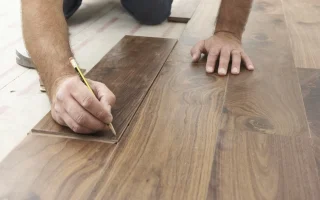Epoxy floor coatings are a great way to enhance a space’s aesthetics and usefulness. However, it is essential that you properly prepare the surface before applying the epoxy. With proper preparation, the epoxy could succeed and avoid problems in the future. To avoid this, follow these steps:
Remove All Debris
Clean the floor and remove any accumulated debris in the space. If you need a broom, dustpan, or power vac to clear the area, do so before moving on to the next step. It is also a good idea to open doors or windows and put on your painter’s mask, safety glasses, and gloves to avoid the hazardous fumes that can build up during this step. If you are working on a garage floor, the next step is eliminating any oil or grease spots that might have accumulated. It is the time to use a liquid degreaser and a stiff-bristled scrub brush. A combination of hot water and ammonia (three ounces of household ammonia for every gallon of hot water) can be used if a mop isn’t doing the job. After scanning and rinsing, it is essential to vacuum the area again. There are a lot of benefits to hiring an epoxy floor installer, such as cost-effectiveness, convenience, quality installation, quick installation, and more. The knowledge and experience required to complete the task correctly will be given to you by epoxy flooring specialists.
Prepare the Walls
Regarding epoxy coatings, thorough preparation is one of the most critical aspects. Without it, the epoxy will not bond properly to the concrete surface. It can result in the floor lifting and cracking over time. Fixing a poorly prepared floor can be expensive and frustrating. To prep your walls, use tape and plastic sheets to cover anything you don’t want to get in dust from the grinding process. It includes windows, shelving, and decorative items hanging on the walls. It’s also suitable for constant doors, as the dust may blow into them. Once your walls are prepped, you can move on to the floor. For the best results, someone can help you with this step. Epoxy has a short pot life, so it’s essential to apply it quickly. You should also ensure you mix only one bucket at a time. If you try to apply too much at once, the epoxy will begin before you can finish applying it.
Prepare the Floor
The floor must be arid before you apply epoxy. The most common way to apply an epoxy coating is with a roller, although spraying can apply it. If you decide to use a roller, get one made for this purpose so it won’t shed during the application process. If applying a two-part epoxy, mix the hardener and resin correctly before applying the nonessential. It will ensure the proper result. It’ll help you avoid problems like a dull finish or low adhesion strength.
In addition to being free of dirt and debris, the surface of your concrete must be rough rather than smooth to allow for a better bond with the epoxy coats. It can be achieved by grinding the surface or using an acid etching solution. After the floor has been prepared, it must be allowed to cure for several days before you can begin work.
Clean the Surface
Sweeping and vacuuming the floor is necessary to remove dirt, grit, dust, oil, grease, and other debris after removing the equipment. If necessary, the concrete can be acid etched to make it more porous and less likely to block the epoxy coating. In addition to preparing the floor for the coating, this is an excellent opportunity to inspect the concrete and identify any defects that need repair. It also includes assessing the moisture level of the concrete. Moisture vapor emissions and high water content are serious issues that will cause problems when applying the epoxy coat. Once the floor has been cleaned, it is a good idea to prime it with the recommended primer from your product supplier. It will seal the surface and help it adhere to the epoxy coating.




